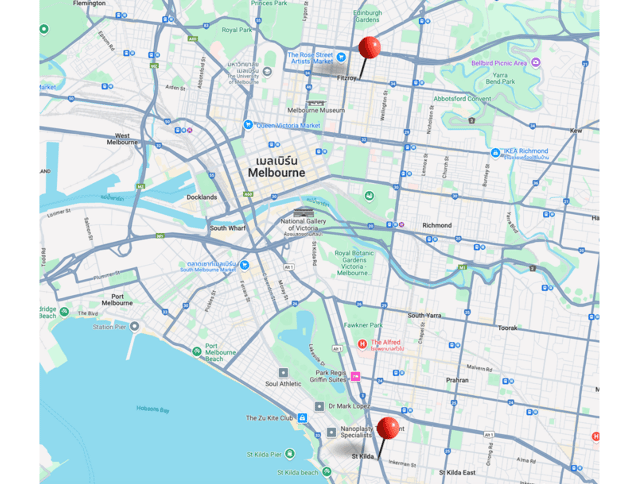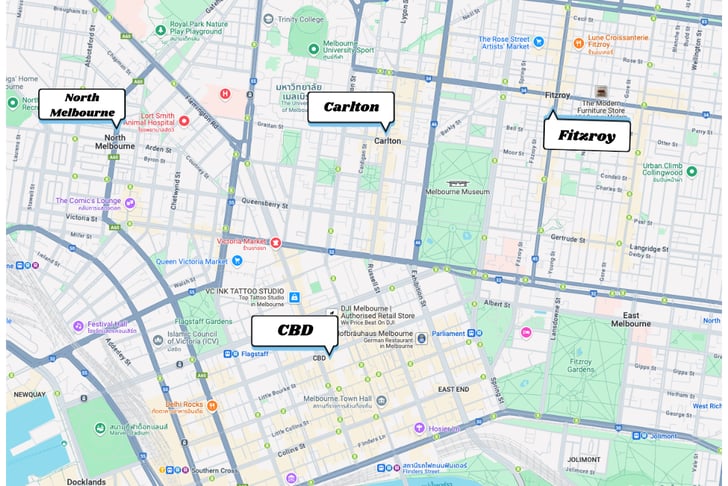"Melbourne Living Guide: Cost of Living, Best Suburbs, and Quality of Life Insights"
Thinking of moving to Melbourne? Our guide answers top questions about the cost of living, quality of life, family-friendly suburbs, and inner-city living options in Melbourne. Explore Melbourne’s vibrant nightlife areas, efficient public transportation, and the most popular suburbs for families. Whether relocating for work or lifestyle, discover everything you need to know to find the perfect Melbourne neighborhood for you.
5/8/20244 min read
Travel insights shared.
What is the Best Area in Melbourne? A Guide to the Top Neighborhoods
Melbourne is renowned for its diverse neighborhoods, each offering unique lifestyles and amenities. The best area in Melbourne largely depends on individual preferences, but many consider the Melbourne CBD to be the ideal choice for its vibrant atmosphere and convenience. With its abundance of cultural attractions, shopping, and dining options, it serves as the city's heart, making it an attractive option for both residents and visitors
However, suburbs like St Kilda and Fitzroy are also popular choices, each with their distinct charm. St Kilda boasts beautiful beaches and a lively social scene, while Fitzroy is known for its artsy vibe and nightlife. Exploring these areas can provide valuable insight into what makes Melbourne a favorite among many.
As one delves deeper into the various neighborhoods, it becomes clear that Melbourne's offerings cater to a wide range of lifestyles, making it a multifaceted city worth discovering.


Top Areas to Live in Melbourne
Melbourne offers a diverse range of neighborhoods, each catering to different preferences and lifestyles. Whether seeking inner-city hustle, family-friendly environments, or vibrant night scenes, Melbourne has something to suit everyone.
Inner City Living
The inner city of Melbourne is ideal for those who thrive on urban energy and convenience. Areas such as Carlton and Fitzroy provide easy access to cultural attractions, dining, and shopping. Residents enjoy a mix of historic architecture and modern amenities.
Public transportation is excellent, making commutes straightforward. The average apartment rental in these areas can be around AUD 2,000 per month. For those who appreciate arts and culture, North Melbourne boasts theatres and galleries, contributing to a vibrant atmosphere that appeals to young professionals and creatives alike.


Factors Influencing Area Preference
When choosing an area in Melbourne, various factors impact individual decisions. Understanding these elements helps in selecting a suburb that meets personal and familial needs. Key considerations include cost of living, proximity to amenities, public transport accessibility, and the quality of schools.
Cost of Living
Cost of living is a primary factor for most residents. It encompasses housing prices, utility costs, and everyday expenses. In Melbourne, suburbs vary significantly in affordability. Here's a breakdown of what you can expect:
Accommodation
Rent is one of the largest expenses in Melbourne. For a one-bedroom apartment in the city center, expect to pay around $1,800 to $2,500 per month. In outer suburbs, the price drops to around $1,200 to $1,800. If you're looking to buy, the median house price is around $800,000, but it can vary significantly depending on the neighborhood.Utilities
On average, utilities (electricity, heating, water, and garbage) cost between $150 and $250 per month for a standard apartment. High-speed internet adds another $50 to $100 monthly.Food and Dining
Grocery shopping for a single person costs approximately $400 to $600 per month. Dining out is a popular choice in Melbourne, and you can expect to pay around $20 to $30 for a meal at a mid-range restaurant. For a coffee or takeaway snack, you'll spend around $4 to $6.Transport
Melbourne has an extensive public transport system, and a monthly travel card will set you back around $150. If you're driving, expect to pay around $1.60 per liter for fuel, plus parking and car maintenance costs.Healthcare and Insurance
Healthcare is generally affordable in Melbourne. As an Australian resident, you'll have access to Medicare, which covers most medical expenses. Private health insurance is optional but can cost between $100 and $300 per month, depending on coverage.Entertainment and Leisure
Melbourne is a city of culture and entertainment. Movie tickets are about $20, and a gym membership costs around $60 to $100 per month. There are plenty of free activities, like exploring parks and markets, but keep in mind that cultural events and festivals can add up.
In conclusion, while Melbourne can be an expensive city to live in, there are ways to manage your budget, especially if you're willing to live a bit outside the city center and enjoy its many free attractions. Individuals must calculate their budgets carefully to ensure they can maintain their desired lifestyle without stretching their finances too thin. For those with a stable income, it offers a high standard of living with plenty of opportunities for work, education, and leisure.
Proximity to Work or Study
Getting to work or university without spending hours in transit is a top priority for many. Melbourne’s CBD (Central Business District) is perfect for professionals working in corporate jobs or students attending universities like RMIT or the University of Melbourne. Suburbs like Carlton or Docklands offer proximity with plenty of perks, including cafes and parks.
Budget
Your budget plays a massive role in narrowing down choices. Inner-city areas like Southbank or Fitzroy are pricier but come with a vibrant lifestyle. If you’re after more affordable options, suburbs like Coburg or Footscray offer excellent value while staying connected to the city.
Lifestyle Preferences
Nightlife and Entertainment: Areas like Richmond, Prahran, or St Kilda are popular with those who love live music, trendy bars, and an active social scene.
Family-Friendly: Suburbs like Camberwell, Doncaster, and Glen Waverley are well-loved by families for their quiet streets, good schools, and parks.
Cultural Vibes: Brunswick and Northcote are great for artsy types and food lovers with their eclectic mix of galleries, cafes, and multicultural eateries.
Public Transport Accessibility
Melbourne’s trams, trains, and buses are excellent, but some areas are better connected than others. Living close to a tram or train line can save you significant time and hassle, making places like Hawthorn or Essendon popular with commuters.
School Zones
For families, being in the zone for top schools like Melbourne High School or McKinnon Secondary College is a deal-breaker. These areas might come at a premium, but they’re worth it for access to quality education.
Community and Safety
A sense of community and safety is essential for many. Suburbs like Elwood and Sandringham attract people looking for safe, friendly neighborhoods with a local vibe. On the other hand, places like Richmond and Footscray have a livelier atmosphere but might feel busier.
Explore
Your guide to travel, hotels, and activities.
Connect
info@goodrestgoodlife.com
© 2024. All rights reserved.